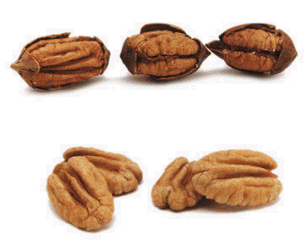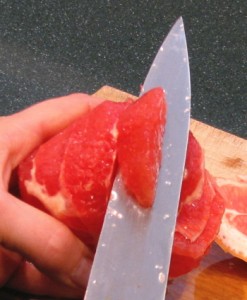 I’ve drawn the vegetable card again this year, but, unlike last year, I’m not worrying about it as much. I’m going to roast Brussels sprouts with olive oil and lemon rind. I’ll also do a green-bean dish for the I-hate-cruciferous-vegetables fools.
I’ve drawn the vegetable card again this year, but, unlike last year, I’m not worrying about it as much. I’m going to roast Brussels sprouts with olive oil and lemon rind. I’ll also do a green-bean dish for the I-hate-cruciferous-vegetables fools.
“Another Diane” raised the make-ahead-vegetable question in the comments from last year’s entry, pointing specifically to the fact that was on my mind but unexpressed last year: that most make-ahead vegetable recipes rely on some kind of heavy cream sauce or cheese. I think the sauces and cheese are favored because they mask overcooked or otherwise tasteless vegetables. That matter has underlain my make-ahead vegetable dilemma.
I’ve come to this conclusion: Although roasted vegetables taste marvelous hot from the oven, they’re quite good at room temperature. I think roasting somehow amps up the flavor enough that they don’t require the sauces to give them flavor when not fresh from the oven. Try Ina Garten’s super-simple Brussels sprouts recipe if you’re interested. You can dress up the results if you like with toasted nuts or lemon zest or a sprinkling of grated Parmesan.
One alternative
 Another Diane, however, implies that she doesn’t want to roast her green vegetables for one reason or another. I therefore offer this green bean recipe for her consideration. It’s quick and easy, and you can do it ahead and get satisfactory results. Me, I’m not crazy about it; the honey doesn’t work for me. My family loves it, however, so maybe yours will, too:
Another Diane, however, implies that she doesn’t want to roast her green vegetables for one reason or another. I therefore offer this green bean recipe for her consideration. It’s quick and easy, and you can do it ahead and get satisfactory results. Me, I’m not crazy about it; the honey doesn’t work for me. My family loves it, however, so maybe yours will, too:
Cashew green beans
- 1 pound fresh green beans, trimmed and cut into 2-inch pieces
- 3 tablespoons butter
- 1/2 cup coarsely chopped salted cashews
- 2 tablespoons honey
- Drop beans into a pot of boiling, salted water. Boil 3 minutes. Drain and set aside.
- Melt butter in skillet over medium heat. Add cashews and cook 3-5 minutes, stirring, to flavor the butter. Add honey and cook 1 minute to blend flavors.
- Pour nut mixture over beans and toss until coated, then serve immediately. Makes 6-8 servings.
Do-ahead notes: To prepare this dish in advance, complete step 1 and step 2. Refrigerate beans and sauce in separate dishes. When almost time to serve, place sauce (which will have solidified) in skillet large enough to accommodate the beans, and set heat to medium. Stir until sauce is thoroughly melted, then add the beans, and toss to coat. Reduce heat to low, cover and heat a few minutes more, checking often until beans are heated through. Serve immediately.
Photo credits: Top, from Eric Hunt at Wikimedia; beans from Sam, aka Kahanaboy, at morguefile.com.
















